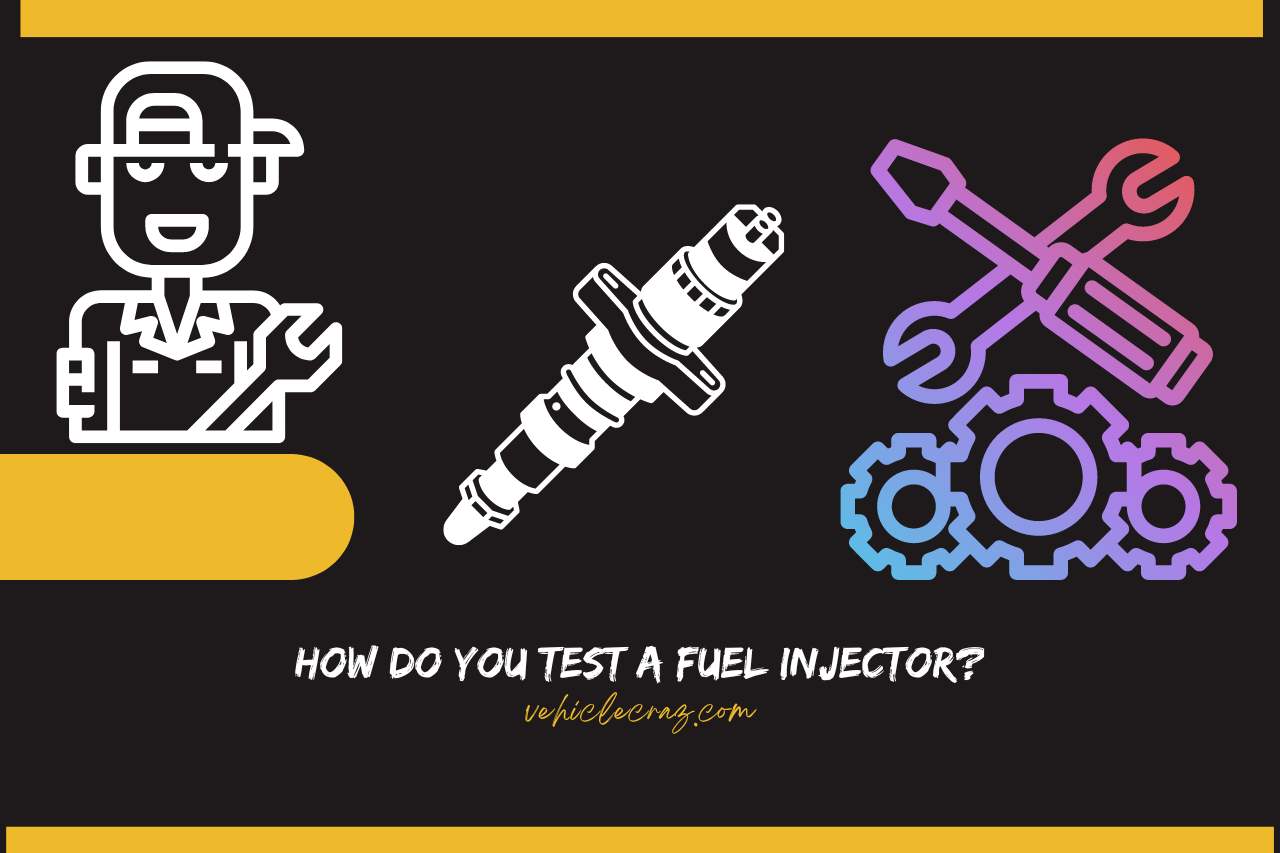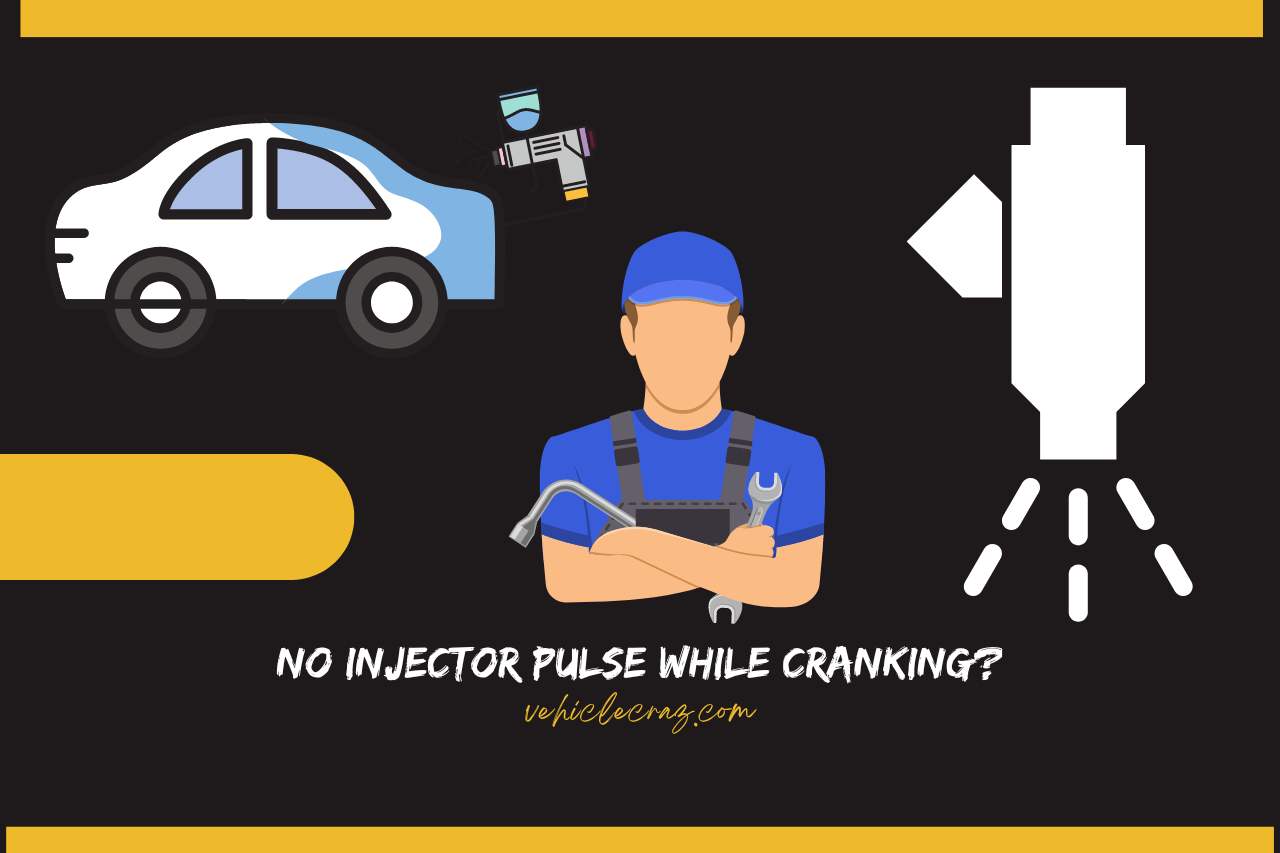No Injector Pulse While Cranking – Diagnosing No Injector Pulse!
If your engine has ever been challenging to start, your fuel consumption has increased, or your idle has become unsettlingly irregular, this article will help you. Engines have complicated systems that require a precise balance of spark, fuel, and compression to operate at their best. An unreliable one of these essential components can result in an unstable engine. This article explores a frequent problem: no Injector Pulse while cranking. To restore smooth operation to your engine, we’ll discuss the importance of fuel injection pulses in contemporary car engines and offer tips for detecting and resolving this issue.
What Causes No Injector Pulse?
One of two leading causes is typically the reason for the lack of an injector pulse. First, it can be caused by engine wear and tear, which decreases oil pressure. In this case, wear in the oil pump and engine’s bearings may result in insufficient oil pressure, which would stop the injector pulse.
If the engine isn’t worn out, the problem could result from a broken oil-pressure-sending device. It is advised to perform an oil-pressure test using a mechanical gauge to identify the exact issue.
This diagnostic process enables more accurate troubleshooting by determining if the problem is caused by sending unit malfunction or engine wear.
What Does “No Injector Pulse While Cranking” Mean?
A condition known as ‘no injector pulse while cranking’ occurs when an internal combustion engine is cranked. Still, the fuel injectors are not getting the electrical signal (pulse) they require to spray fuel into the engine cylinders. There may be several causes for this lack of injector pulse.
A malfunctioning Engine Control Unit (ECU), which regulates several engine operations, including fuel injection and spark timing, is one frequent cause.
The lack of an injector pulse and a spark can prevent the engine from starting if the ECU malfunctions when the engine is cranking.
Also, blown fuses can disrupt the electrical circuits controlling the ECU and fuel injectors. When a fuse related to these components blows, it interrupts their operation, causing the engine to shut down, especially during cranking.
To diagnose this issue, inspect the fuses for continuity, replacing any damaged ones. Addressing these problems is crucial to restore proper engine operation.
What Common Symptoms Indicate a Lack of Injector Pulse?
- Starting Problems – The engine may have trouble starting or not starting altogether.
- Poor Idle – It’s possible for idling to be irregular or unstable, including stalling.
- Failed Emissions – Smog tests that fail can be caused by insufficient fuel delivery and result in issues with emissions.
- Poor Performance – Power decrease and slow acceleration are common.
- Limited RPM- The engine might not run at its maximum number of revolutions per minute (RPM).
- Increased Fuel Consumption – Incomplete combustion results in increased fuel consumption.
- Rough Engine Performance – You may experience misfires, vibrations, and rough running.
- Surging and Bucking – The engine may behave erratically under different throttle loads, such as by surging or bucking.
How To Fix the “No Injector Pulse While Cranking” Issue?
- Check Fuses and Relays – Start by looking at the injector fuse and relay, usually found in the relay box in the engine compartment. Electrical circuits, such as those for the gasoline pump, fuel injectors, and related electronics, are protected by fuses. Any blown fuses should be replaced with equivalent replacements. Try replacing the injector relay with an equivalent one to rule out a faulty one.
- Examine Injector Wire – Check for damage or loose connections in the wire harness attached to the fuel injectors. Ensure there are no breaks or shorts in the wiring.
- Test Injector Operation – It’s time to check the injectors to see if the fuse and relay are operating correctly. As you try to start the engine, first unplug each injector one at a time. If a machine starts while a specific injector is unplugged, it means the injector is defective and needs to be replaced.
- Measure Injector Resistance – The resistance of each injector between its two terminals should be measured. The injector datasheet has manufacturer specifications, so compare the values to those. Replace the malfunctioning injector if the resistance exceeds the allowed range.
- ECU Inspection – If none of the above methods fix the problem, the Engine Control Unit (ECU) may have malfunctioned. If so, seek professional advice or consider replacing the ECU to guarantee correct engine management.


How Do you Test a Fuel Injector?
- TBI System (Visual Inspection) – For Throttle Body Injection systems, you can start the engine, remove the cover from the air cleaner housing, and verify the injector’s spray pattern to evaluate the fuel spray pattern visually. An erratic pattern may indicate a need for cleaning or replacement.
- Electronic Fuel Injection (EFI) System (Listening Test) – EFI systems call for using a long screwdriver or a mechanic’s stethoscope to listen to each injector. The injector opens and closes with a clicking sound to show it is functioning. A dead injector is indicated by silence.
- Checking the Injector Coil – Use a multimeter to measure the resistance of the injector coil. The reading should be compared to the manufacturer’s specifications. Deviations could be a sign of a bad injector.
- Testing Injector Circuit – When testing the circuit, use a test light to examine the injector’s power and pulse signal. An active injector has a flashing test light at the power terminal and flashes when the engine is turned on.
- Test with a Noid Light – You may check the injector regulating circuit using a Noid light that is made for the make and model of your car. For accurate results, adhere to the tool’s instructions.
What Causes No Power to Fuel Injectors?
Carbon buildup on the injector nozzles may be the primary cause for fuel injectors to lose power. Carbon buildup is possible over time, mainly when using fuel of poor quality.
These deposits can cause power loss and, in severe circumstances, engine damage, including fractured pistons, by affecting the engine’s carefully calibrated combustion cycle.
Fuel injectors are made to spray fuel into the combustion chamber precisely, but carbon buildup can change the pattern, which can impact the efficiency of the combustion and the ratio of air to fuel.
Regular maintenance can assist in avoiding carbon buildup and ensure optimal injector function, preserving engine power and longevity.
Examples include utilizing high-quality fuel and performing periodic injector cleaning.
How Do you Fix a Stuck Injector?
Cleaning or replacing the fuel injector is required to resolve the issue. Using easily accessible fuel injector cleaning products is one choice. These solutions can aid in cleaning away deposits and removing an injector.
Alternatively, you can bring your car to a qualified fuel injector cleaner who can clean it thoroughly. If your budget allows, a more long-lasting solution is to replace the stuffed injector with a new one.
Restoring correct fuel flow by cleaning or replacement ensures optimal engine performance and efficiency. The decision between cleaning and replacement depends on the seriousness of the problem and available funds.
Watch this one,
Video Credits – el Panin Auto Diagnostics
You May Also Like


I’m Alex, a seasoned mechanical teacher with over 20 years of hands-on experience in Australia. My passion for all things automotive has driven me to establish this blog, aiming to share my wealth of knowledge and expertise with fellow enthusiasts, DIYers, and anyone keen on understanding the mechanics behind the machines we rely on daily.


![Can you Add a Digital Speedometer to a Car? [New/Older Vehicles]](https://vehiclecraz.com/wp-content/uploads/2023/11/ElecdiaryPresspallettevehiclecraz-49-768x512.jpg)



![Does Tire Size Affect Speedometer? [Myths Busted]](https://vehiclecraz.com/wp-content/uploads/2023/11/ElecdiaryPresspallettevehiclecraz-33-768x512.jpg)
